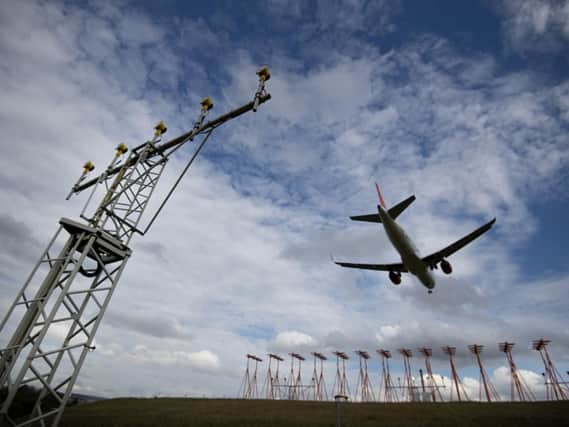Application due in June to change arrival routes of Luton Airport


The consultation ran from October 19 last year to February 5 - more than 2,400 responses received from MPs, councils, airlines, flying clubs, the military, community groups and individual members of the public.
These responses are now being reviewed to help inform the final proposal to be submitted to the Civil Aviation Authority (CAA).
Advertisement
Hide AdAdvertisement
Hide AdThe joint consultation, co-sponsored by London Luton Airport and air traffic control provider NATS, consulted on two options to simplify and modernise the arrival routes for flights into the UK’s fifth busiest airport and segregate them from Stansted’s, ensuring safety.
While the consultation is now closed, the virtual exhibition, which contains all the information, details and maps about the proposals, is still available to browse or revisit.
Once all responses have been scrutinised, London Luton Airport and NATS will publish explanations of the analysis and the final proposal, before submitting a formal Airspace Change Proposal (ACP) to the CAA expected to be in June 2021.
Neil Thompson, operations director at London Luton Airport, said: “It’s great to see so many people have engaged with the virtual exhibition and responded to the consultation.
Advertisement
Hide AdAdvertisement
Hide Ad"We look forward to reviewing everyone’s comments and, along with NATS, finalising a design that prioritises safety as well as balancing the needs of the community and the environment now and into the future.”
The CAA decides whether the proposed changes can be made; if approved, the new design would be implemented no earlier than February 2022.
In response to the restrictions in place because of Covid-19, the consultation has had an increased online presence to still allow for engagement with the majority of stakeholders. More than 11,000 people visited the virtual exhibition during the consultation period and 10 live interactive broadcast webinars were held for the public to ask questions directly to subject matter experts.
To inform those members of the public who are not online, advertisements were placed in local newspapers and magazines and leaflets detailing the proposal, how to access paper consultation material and how to provide a postal response were offered to local representative groups and libraries.